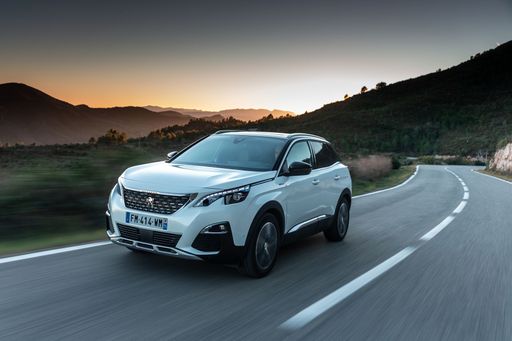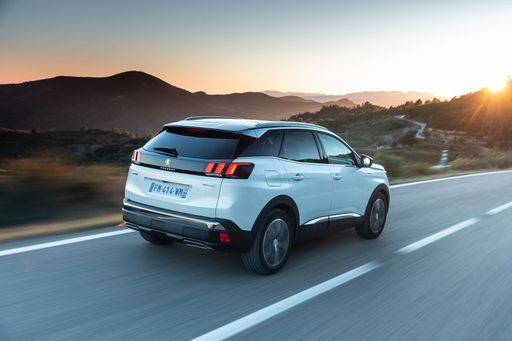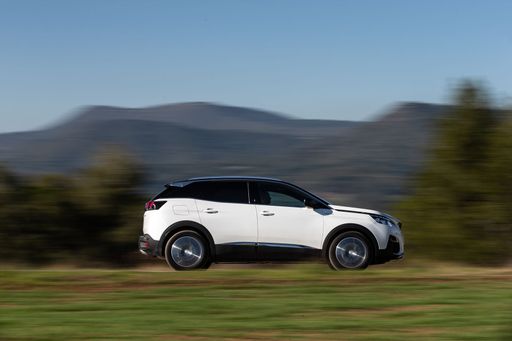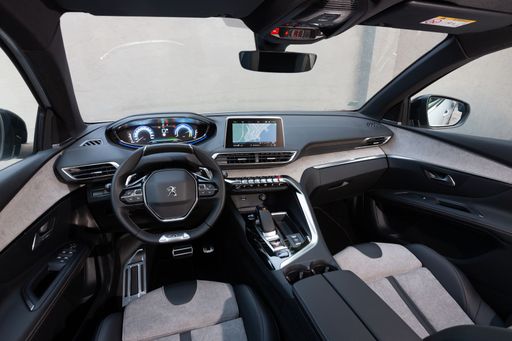Peugeot 3008 vs Peugeot Partner – Differences & prices compared
Compare performance, boot capacity, efficiency and price at a glance.
Find out which car is the better choice for you – Peugeot 3008 or Peugeot Partner?
Here’s where it gets real: The technical differences in detail
Costs and Efficiency: Price and efficiency are key factors when choosing a car – and this is often where the real differences emerge.
Peugeot Partner has a decisively advantage in terms of price – it starts at 22400 £, while the Peugeot 3008 costs 35100 £. That’s a price difference of around 12753 £.
Fuel consumption also shows a difference: the Peugeot 3008 manages with 0.90 L and is therefore decisively more efficient than the Peugeot Partner with 5.20 L. The difference is about 4.30 L per 100 km.
In terms of energy consumption, the advantage goes to the Peugeot 3008: with 16.90 kWh per 100 km, it’s hardly perceptible more efficient than the Peugeot Partner with 17.40 kWh. That’s a difference of about 0.50 kWh.
As for range, the Peugeot 3008 performs convincingly better – achieving up to 698 km, about 344 km more than the Peugeot Partner.
Engine and Performance: Power, torque and acceleration say a lot about how a car feels on the road. This is where you see which model delivers more driving dynamics.
When it comes to engine power, the Peugeot 3008 has a significantly edge – offering 325 HP compared to 136 HP. That’s roughly 189 HP more horsepower.
In acceleration from 0 to 100 km/h, the Peugeot 3008 is decisively quicker – completing the sprint in 6 s, while the Peugeot Partner takes 11.20 s. That’s about 5.20 s faster.
In terms of top speed, the Peugeot 3008 performs a bit better – reaching 220 km/h, while the Peugeot Partner tops out at 183 km/h. The difference is around 37 km/h.
There’s also a difference in torque: the Peugeot 3008 pulls significantly stronger with 511 Nm compared to 300 Nm. That’s about 211 Nm difference.
Space and Everyday Use: Whether family car or daily driver – which one offers more room, flexibility and comfort?
Both vehicles offer seating for 5 people.
In curb weight, the Peugeot Partner is distinct lighter – 1329 kg compared to 1648 kg. The difference is around 319 kg.
In terms of boot space, the Peugeot Partner offers convincingly more room – 1800 L compared to 520 L. That’s a difference of about 1280 L.
In maximum load capacity, the Peugeot Partner performs significantly better – up to 4000 L, which is about 2520 L more than the Peugeot 3008.
When it comes to payload, Peugeot Partner decisively takes the win – 991 kg compared to 467 kg. That’s a difference of about 524 kg.
Our conclusion: The Peugeot 3008 proves to be leaves the rival little chance and thus becomes our DriveDuel Champion!
Overall, Peugeot 3008 is the better all-rounder in this comparison.
Peugeot 3008
The Peugeot 3008 is a compact SUV that seamlessly combines sleek design with modern functionality. Its interior offers a sophisticated and comfortable driving experience, characterised by high-quality materials and innovative technology features. With its dynamic performance and stylish aesthetics, the 3008 stands out in the competitive world of family SUVs.
details @ media.stellantis.com
@ media.stellantis.com
 @ media.stellantis.com
@ media.stellantis.com
 @ media.stellantis.com
@ media.stellantis.com
 @ media.stellantis.com
@ media.stellantis.com
Peugeot Partner
The Peugeot Partner is a versatile and practical vehicle, ideal for both urban and rural settings. Its spacious interior and adaptable seating make it a popular choice for families and businesses alike. With a focus on reliability and efficiency, the Partner is well-suited to meet the demands of everyday transport.
details

|
|
|
|
|
Costs and Consumption |
|
|---|---|
|
Price
35100 - 51400 £
|
Price
22400 - 33800 £
|
|
Consumption L/100km
0.9 - 5.4 L
|
Consumption L/100km
5.2 - 6.3 L
|
|
Consumption kWh/100km
16.9 - 17.8 kWh
|
Consumption kWh/100km
17.40 kWh
|
|
Electric Range
85 - 698 km
|
Electric Range
354 km
|
|
Battery Capacity
0.4 - 96.9 kWh
|
Battery Capacity
-
|
|
co2
0 - 121 g/km
|
co2
0 - 143 g/km
|
|
Fuel tank capacity
55 L
|
Fuel tank capacity
53 - 61 L
|
Dimensions and Body |
|
|---|---|
|
Body Type
SUV
|
Body Type
Cargo Van
|
|
Seats
5
|
Seats
2 - 5
|
|
Doors
5
|
Doors
4 - 5
|
|
Curb weight
1648 - 2337 kg
|
Curb weight
1329 - 1813 kg
|
|
Trunk capacity
470 - 520 L
|
Trunk capacity
1800 L
|
|
Length
4542 mm
|
Length
4403 - 4753 mm
|
|
Width
1895 mm
|
Width
1848 mm
|
|
Height
1641 mm
|
Height
1796 - 1812 mm
|
|
Max trunk capacity
1430 - 1480 L
|
Max trunk capacity
3300 - 4000 L
|
|
Payload
383 - 467 kg
|
Payload
611 - 991 kg
|
Engine and Performance |
|
|---|---|
|
Engine Type
Plugin Hybrid, Electric, Petrol MHEV
|
Engine Type
Electric, Diesel, Petrol
|
|
Transmission
Automatic
|
Transmission
Automatic, Manuel
|
|
Transmission Detail
Dual-Clutch Automatic, Reduction Gearbox
|
Transmission Detail
Reduction Gearbox, Manual Gearbox, Automatic Gearbox
|
|
Drive Type
Front-Wheel Drive, All-Wheel Drive
|
Drive Type
Front-Wheel Drive
|
|
Power HP
145 - 325 HP
|
Power HP
102 - 136 HP
|
|
Acceleration 0-100km/h
6 - 10.2 s
|
Acceleration 0-100km/h
11.20 s
|
|
Max Speed
170 - 220 km/h
|
Max Speed
135 - 183 km/h
|
|
Torque
230 - 511 Nm
|
Torque
205 - 300 Nm
|
|
Number of Cylinders
3 - 4
|
Number of Cylinders
3 - 4
|
|
Power kW
107 - 239 kW
|
Power kW
75 - 100 kW
|
|
Engine capacity
1199 - 1598 cm3
|
Engine capacity
1199 - 1499 cm3
|
General |
|
|---|---|
|
Model Year
2024 - 2025
|
Model Year
2024 - 2025
|
|
CO2 Efficiency Class
B, A, D
|
CO2 Efficiency Class
A, E
|
|
Brand
Peugeot
|
Brand
Peugeot
|
What drive types are available for the Peugeot 3008?
The Peugeot 3008 is offered with Front-Wheel Drive or All-Wheel Drive.
The prices and data displayed are estimates based on German list prices and may vary by country. This information is not legally binding.
